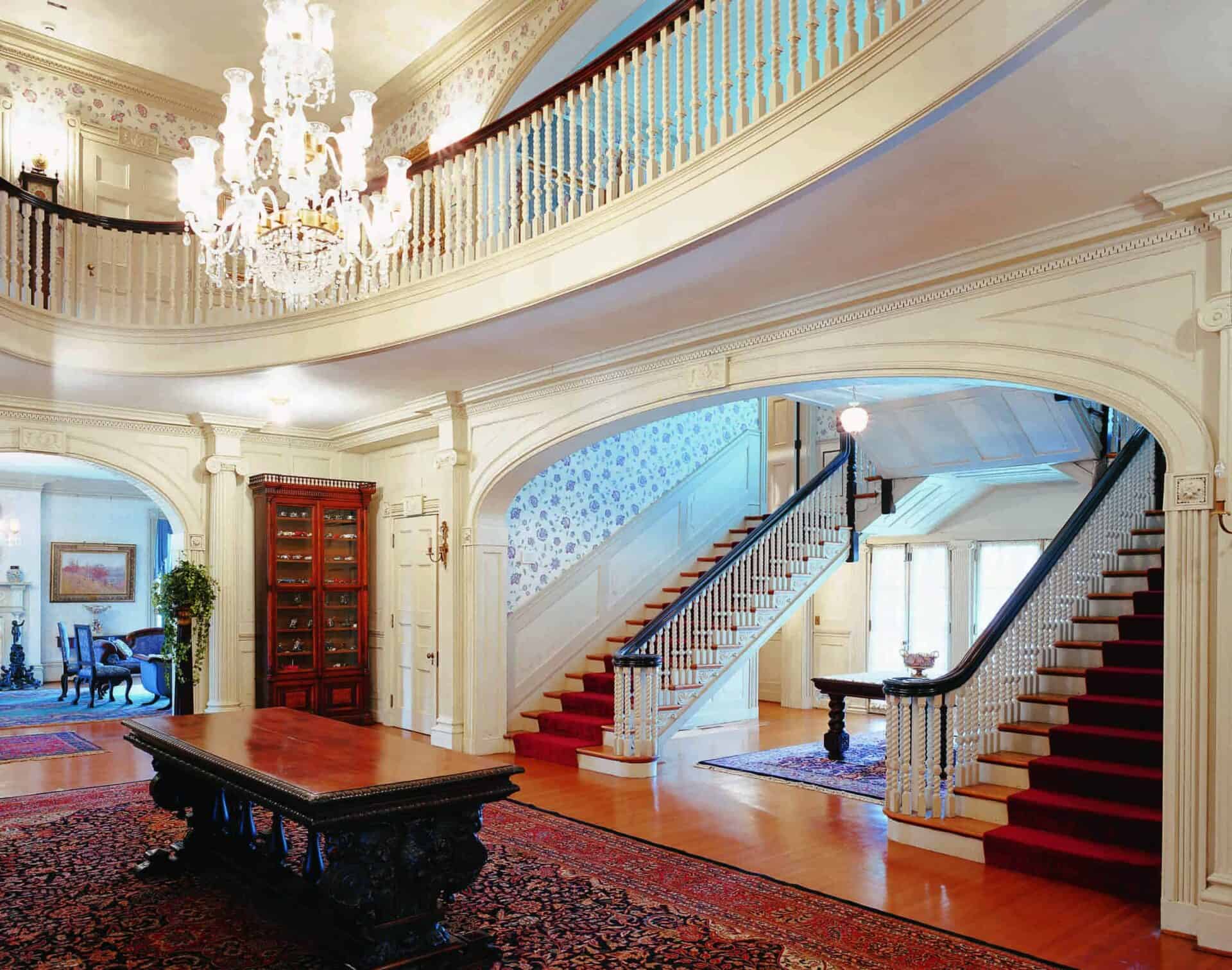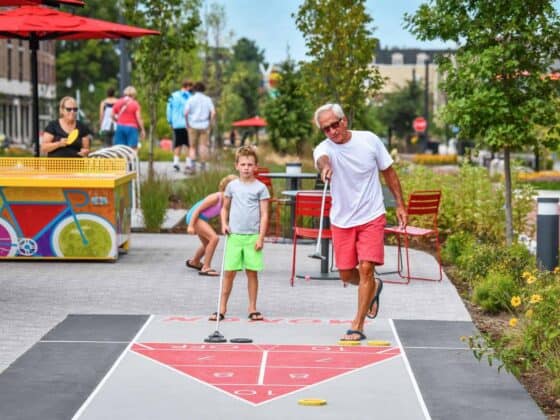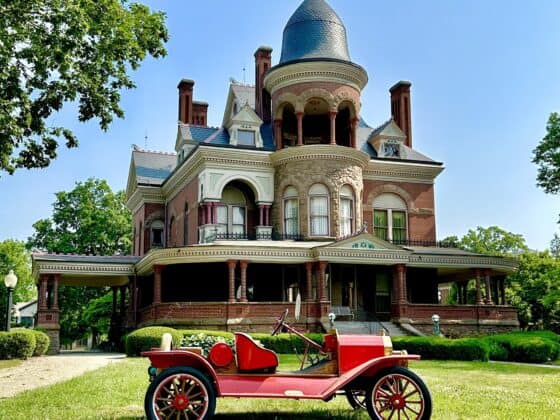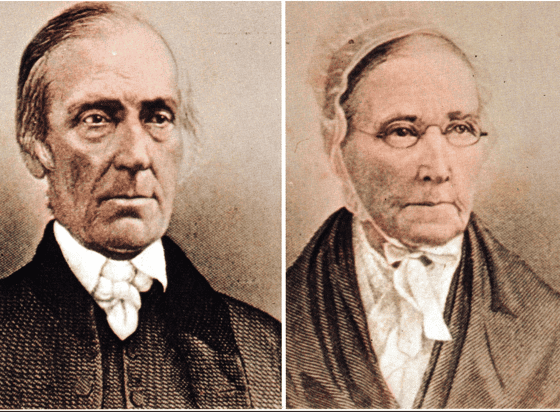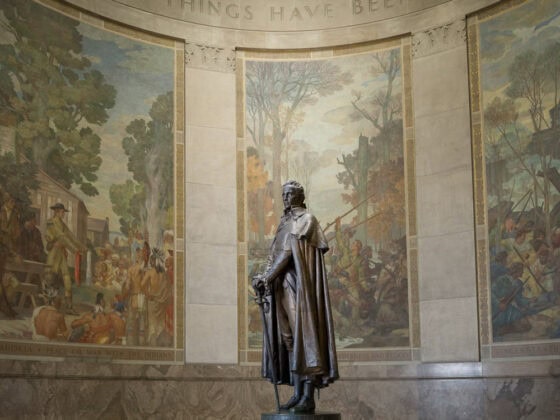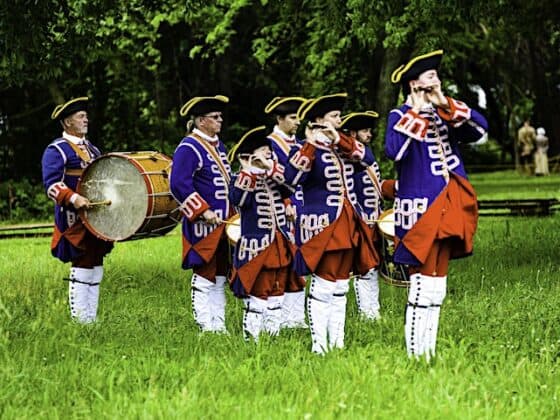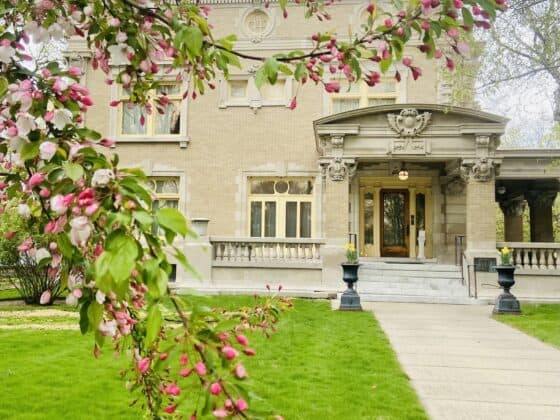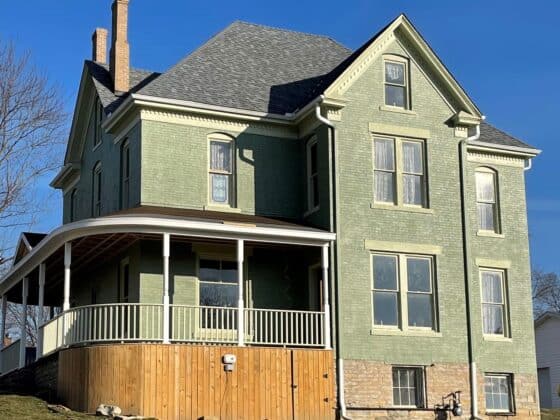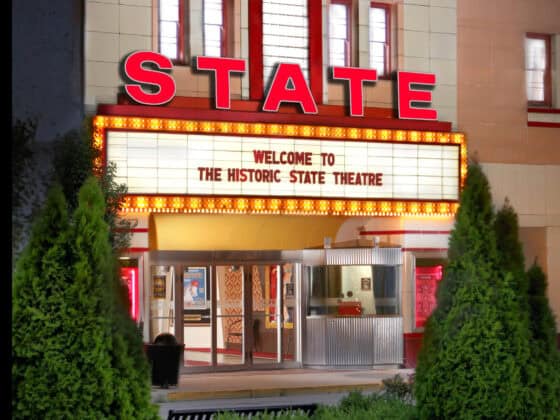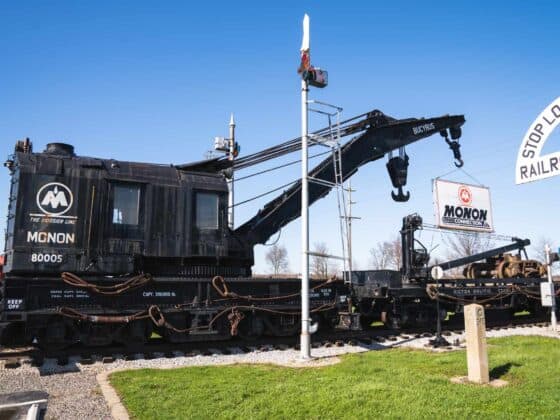Story by Glenda Winders
Now that spring is here and the pandemic is on the wane, you’re probably itching to get out and see the world. Not ready to get on an airplane just yet? Then it’s the perfect time for a road trip to some of the Indiana’s most historic landmarks that played a significant part in Indiana’s history.
“Indiana is full of incredible sites and state parks related to people who have made an impact locally, on the state and on the world,” said Cathy Ferree, president and CEO of the Indiana State Museum and Historic Sites. “There’s an incredible wealth of history and people who made legacies that are still relevant.”
The T.C. Steele State Historic Site in Brown County, is where the noted artist made his home with his second wife, Selma. The guided tour of the home they named “House of the Singing Winds” and his barn-like studio allows you to experience the places where he loved to paint landscapes and Selma’s restored gardens, which are spectacular in the spring. Trails through the forest allow you tramp through the 92-acre property as Steele might have.

At Angel Mounds State Historic Site on the banks of the Ohio River near Evansville, discover the remains of a 1,000-year-old settlement constructed by the Middle Mississippian culture long before European explorers arrived. The 12 earthen mounds that give the site its name were built for ceremonial and residential purposes throughout the 600-acre property. Hike the four-mile Angel Mounds Loop Trail and visit the interpretive center, where you’ll learn about the settlement and Indiana archaeologist Glenn Black, who worked here with a team of 277 people during the WPA program in the 1930s.
Anyone who has read Gene Stratton-Porter’s books and stories will want to make a pilgrimage to the author’s homes. Also an environmentalist, photographer, illustrator and filmmaker, Porter lived for 18 years in a Queen Anne rustic cottage in the Limberlost swampland near Geneva. Now you can tour the house and her greenhouse, explore the grounds on your own or take a tour with an onsite naturalist. When the swamp was drained, Porter and her family moved to a cabin she designed on the banks of Sylvan Lake near Rome City. Many of her belongings are still in the home, and you can also walk through the wild landscape that inspired her. The sites are 1.5 hours apart, so visiting both in a day is possible.

In Vincennes, the Indiana Territory’s first capital, tour several significant buildings and spend time outdoors in between. Visit the “Red House,” the oldest government building in the Midwest, where the territory’s first legislature convened; the “French House,” once the home of a fur trader; and the Jefferson Academy, the first school of higher learning in the state and the precursor to today’s Vincennes University. Elihu Stout’s print shop still stands where he came to work when Gov. William Henry Harrison commissioned him to print the territorial laws and later those governing the Louisiana Purchase. When you’re finished here, head to Corydon, the state’s first capital, to see the original capitol building and the “Constitution Elm” where the first delegates gathered to write the state constitution.

In Carroll County, the Delphi Opera House is located in the former “City Hall” built in 1864, and was the center for entertainment in the late 1800s and early 1900s. The Opera House hosted theatre troupes, minstrel shows, local drama, concerts & lectures and had at least six performances on stage from James Whitcomb Riley. The building underwent a tremendous restoration and reopened as a performing arts and events venue in 2015. The venue is set to reopen to the public for performances beginning Fall 2021 but is available now to book for weddings, celebrations, and events.
For a different kind of adventure, Whitewater Canal State Park at Metamora celebrates Indiana’s efforts toward canal-building as a means of improving transportation in the mid- 1800s. Or visit New Harmony, where two separate utopian societies attempted to take root, and many of the buildings are still intact. In Remington, Fountain Park Chautauqua has continued to promote the concepts and values of the early Chautauqua movement, while offering more than just a religious experience through its arts programs. It was started in 1893, and added to the National Register of Historic Places in 2001. In 1898 a summer hotel was constructed and is still in use today. There are now seventy three cottages, campsites, a 600-seat tabernacle, double art buildings for adult and youth art classes, museum, recreational hall, shelter, food stand, gazebo, playground equipment and basketball court.

If your plans take you to sites that require you to be inside — the Levi and Catherine Coffin house that recalls and honors the courageous couple who made their home an important stop on the Underground Railroad; the Lanier Mansion in Madison or the Culbertson Mansion in New Albany— Ferree said all pandemic protocols will be in place to keep visitors safe. Be sure and also check out the historic Seiberling Mansion in Kokomo, where visitors are free to enjoy the museum and mansion at their own pace; or can take a guided tour led by a museum docent.
Ferree says an unexpected benefit of visiting historic places is that “you can be together around a place that stimulates creativity and allows you to relax and be together.”

An excellent way to understand a place’s culture is to tour its historic homes. Indiana offers one president’s humble boyhood home, another’s gubernatorial mansion and everything in between.
“Sites like these offer fascinating stories and contribute to a community’s unique character,” said Mindi Woolman, director of marketing and communications at Indiana Landmarks.
One of the grandest is the Potter- Haan house, a 10,900-square-foot dwelling that served as the Connecticut pavilion at the St. Louis World’s Fair in 1904. William Potter bought the Colonial-Revival-style home and had it reconstructed in Lafayette. In 1984 it was purchased by art collectors Bob and Ellie Haan as their home and gallery. Look especially for the double staircase, arches and columns.

At the other end of the spectrum is the rustic 1828 cabin of abolitionist George Boxley, located in Sheridan. Jailed in Virginia for inciting a slave rebellion, he escaped with the help of his wife, Hannah, who smuggled a
saw into his cell. After running from bounty hunters for several years the couple became the first settlers of Sheridan. Today costumed interpreters tell their story.

The original capitol building in Corydon, Indiana.
In 1849 Charles Shrewsbury built a Greek Revival home overlooking the Ohio River in Madison, and in 1948 Ann and John Windle purchased and lovingly restored the structure as their home and antique business. The most dramatic feature of the Shrewsbury-Windle house remains its freestanding spiral staircase.
Louis and Anne Kunz Hartman built the Queen Anne-style Kunz-Hartman house in New Albany in 1898-99. Hartman was a German immigrant who became a prominent businessman and is best remembered for his help to African Americans during Reconstruction.

The Bailly Homestead at Indiana Dunes National Park was built by Honore Gratien Joseph Bailly de Messein in 1822. One of the earliest Indiana settlers, Bailly played a role in the development of the Calumet region because of the fur-trading post where he provided a meeting place for Native Americans and European settlers.
In Elkhart, the Ruthmere Mansion is known as “the Jewel of Indiana,” and was built in 1910 in the Beaux Arts style.
History can also be found in unexpected places. In West Lafayette, the Triple XXX Family Restaurant is Indiana’s first and oldest drive-in, founded in 1929. Their food, root beer, and history grabbed the attention of celebrity chef Guy Fieri who featured them on an episode of Diners, Drive-Ins, and Dives.


